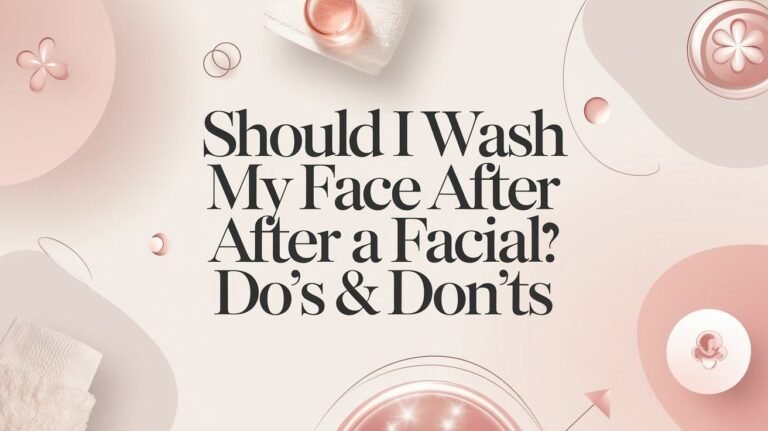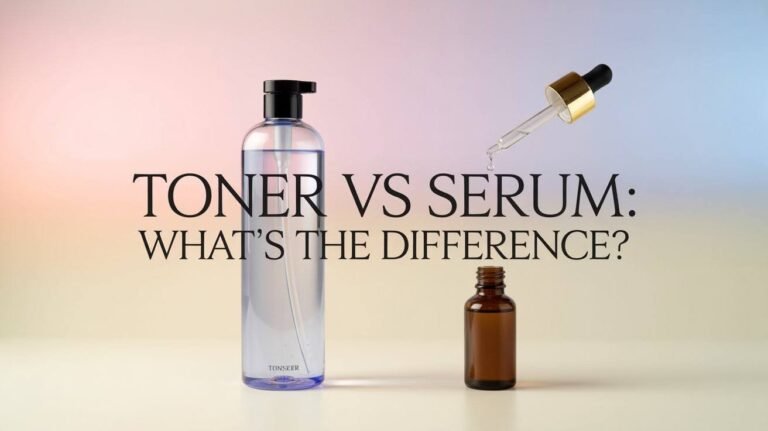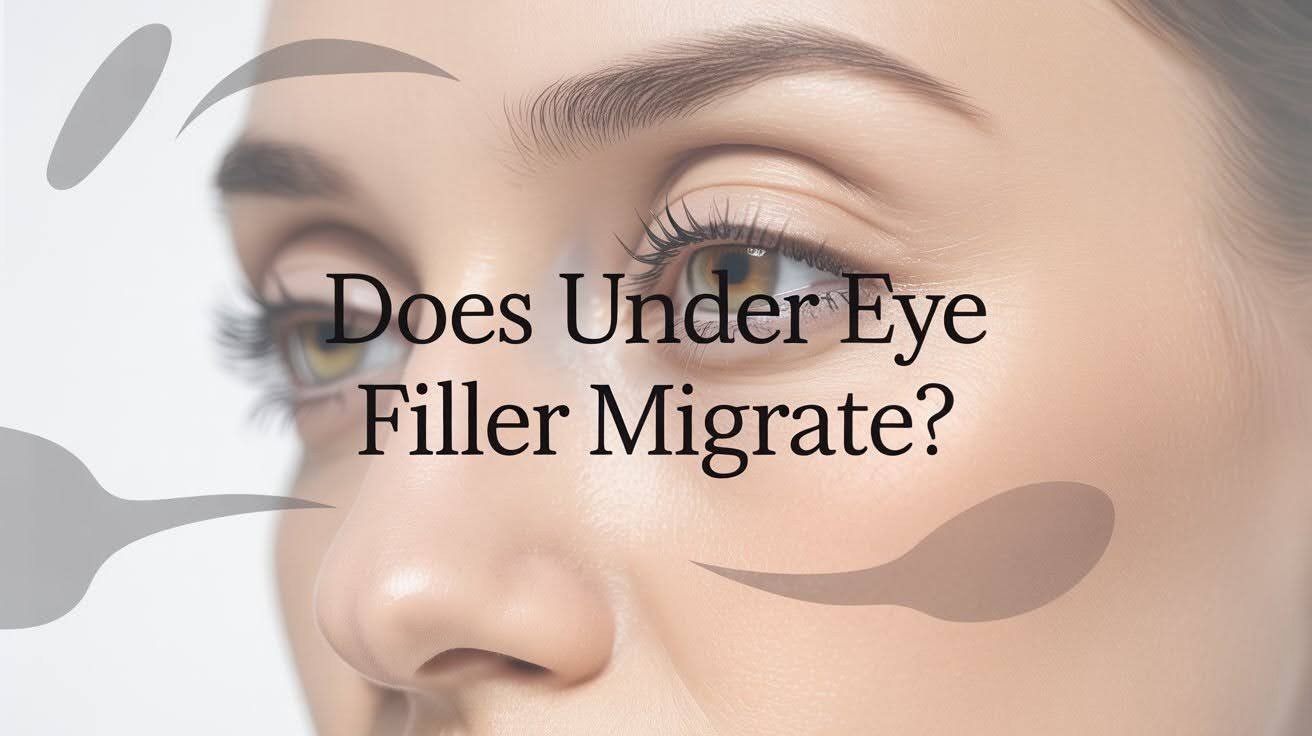Does Moisturizer Cause Acne?
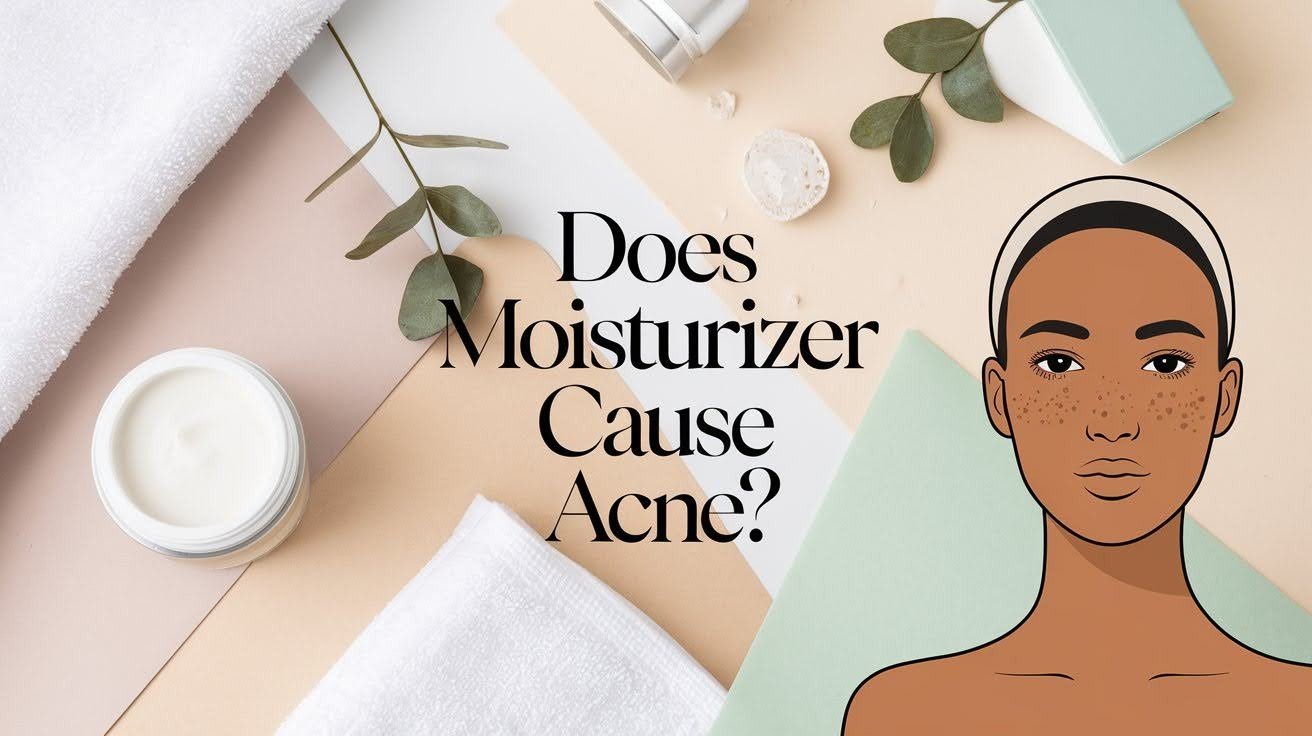
The relationship between moisturizer and acne is complex. Some claim that their skin was cleared by a moisturizer. Others claim their breakouts were brought on by it.
I’ve struggled with this confusion myself, and I frequently hear people ask if moisturizers cause acne. There is more to the truth than meets the eye. For several years now, I have been guiding people about reality.
You’ll find why some moisturizers cause breakouts while others don’t in this guide. I’ll list the ingredients that clog pores, share firsthand accounts from people who have dealt with this problem, and offer you advice supported by dermatologists.
Additionally, you will find how to choose the best moisturizer for your skin type. You’ll understand precisely how to moisturize without getting pimples by the end.
Understanding the Link Between Moisturizer and Acne

Moisturizers play a vital role in skin health, but the wrong formula can trap oil and bacteria that lead to breakouts.
Moisturizers maintain your skin barrier and balance hydration. When skin gets too dry, it overcompensates by making extra sebum.
This excess oil clogs pores and causes acne. Well-hydrated skin produces just enough oil, which is why skipping moisturizer often makes acne worse.
Heavy formulas can cause acne by sitting on your skin surface and blocking pores. They trap dead skin cells, oil, and bacteria underneath. Thick, occlusive creams lock in moisture but also trap everything else.
Non-comedogenic products avoid pore-clogging ingredients and let your skin breathe.
Comedogenic products contain ingredients that trigger acne. Choosing non-comedogenic options significantly reduces breakout risk.
Personal Experiences: When Moisturizers Made Things Worse
Real stories show how the wrong moisturizer choice can trigger sudden breakouts, while the right adjustments bring clear skin back.
“I Broke Out After Switching Moisturizers”
Many people experience sudden acne after changing to a thicker cream. Heavy formulas contain more occlusive ingredients that trap oil and bacteria.
Fragranced creams irritate skin and trigger inflammation, especially around cheeks and jawline. Overusing the new product or reacting to one problematic ingredient can cause breakouts across your entire face.
“Using Less Moisturizer Helped My Skin”
Some people clear up when they reduce how much moisturizer they use. Over-moisturizing leaves residue that mixes with makeup and pollution, blocking pores and attracting bacteria.
Many users report success after cutting their amount in half, from a nickel-sized dollop to a pea-sized amount. Some discover they only need moisturizer once daily.
“My Skin Cleared After Choosing the Right Formula”
Success stories often involve switching from cream to gel formulas. Gel moisturizers absorb quickly without leaving residue.
One person cleared forehead acne by switching to a lightweight gel with hyaluronic acid. Another avoided coconut oil and mineral oil after checking ingredient lists.
Trial and error is part of the process. Learning which ingredients cause your breakouts helps you avoid them in future products.
Dermatologist Insights: Why Some Moisturizers Break You Out
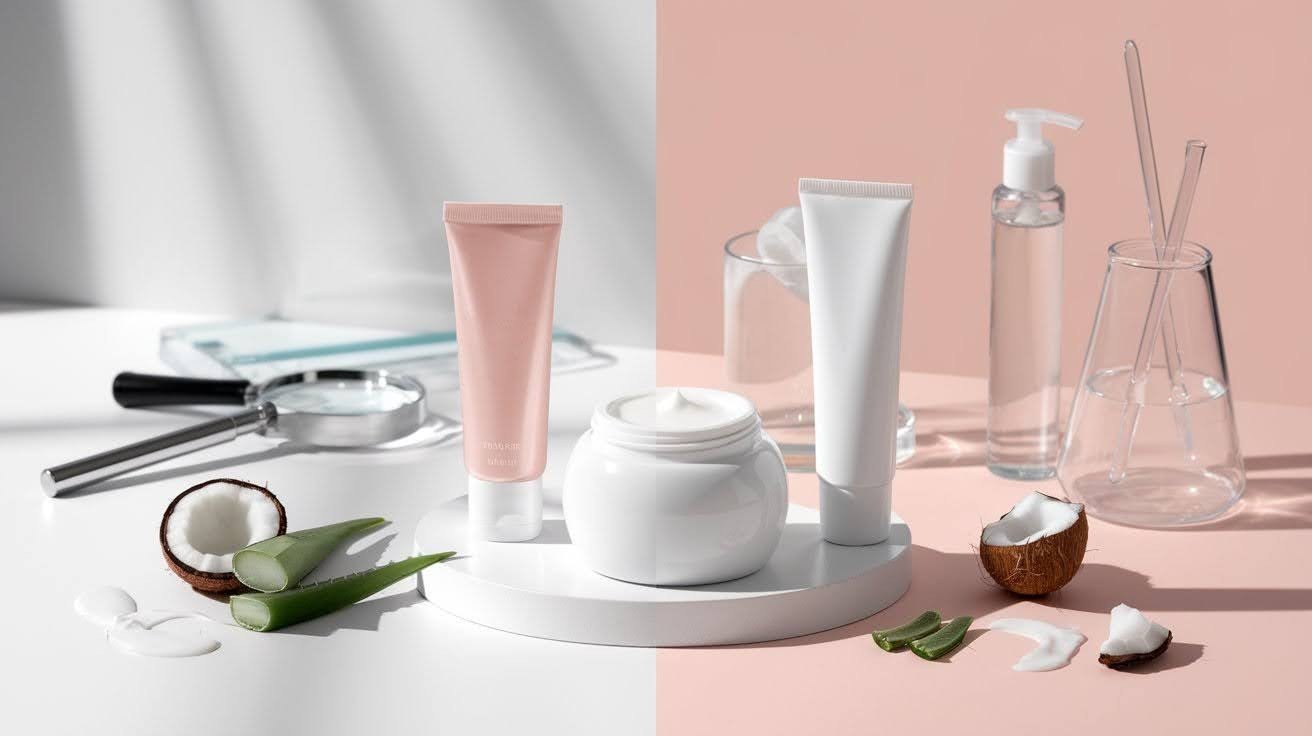
Dermatologists identify specific ingredients and formulation issues that trigger acne in people who thought moisturizer was universally safe.
Common pore-clogging ingredients include mineral oil, heavy silicones like dimethicone, coconut oil, and cocoa butter. These create barriers that trap oil and bacteria underneath.
Parabens and artificial fragrances cause irritation and inflammation that lead to breakouts. Fragrance-free products reduce this risk significantly.
Drying alcohols like isopropyl and denatured alcohol strip your skin and trigger excess oil production. Fatty alcohols like cetyl and stearyl alcohol are safe and moisturizing.
Your skin type determines which formulas work. Oily skin needs lightweight gels, not heavy creams that combine with natural sebum. Dry skin handles richer formulas without breaking out. Combination skin requires gel on the T-zone and slightly richer formulas on dry areas.
Matching moisturizer to your skin type is critical. Using the wrong formula causes either dehydration or breakouts.
Signs You’re Over-Moisturizing (and How to Fix It)
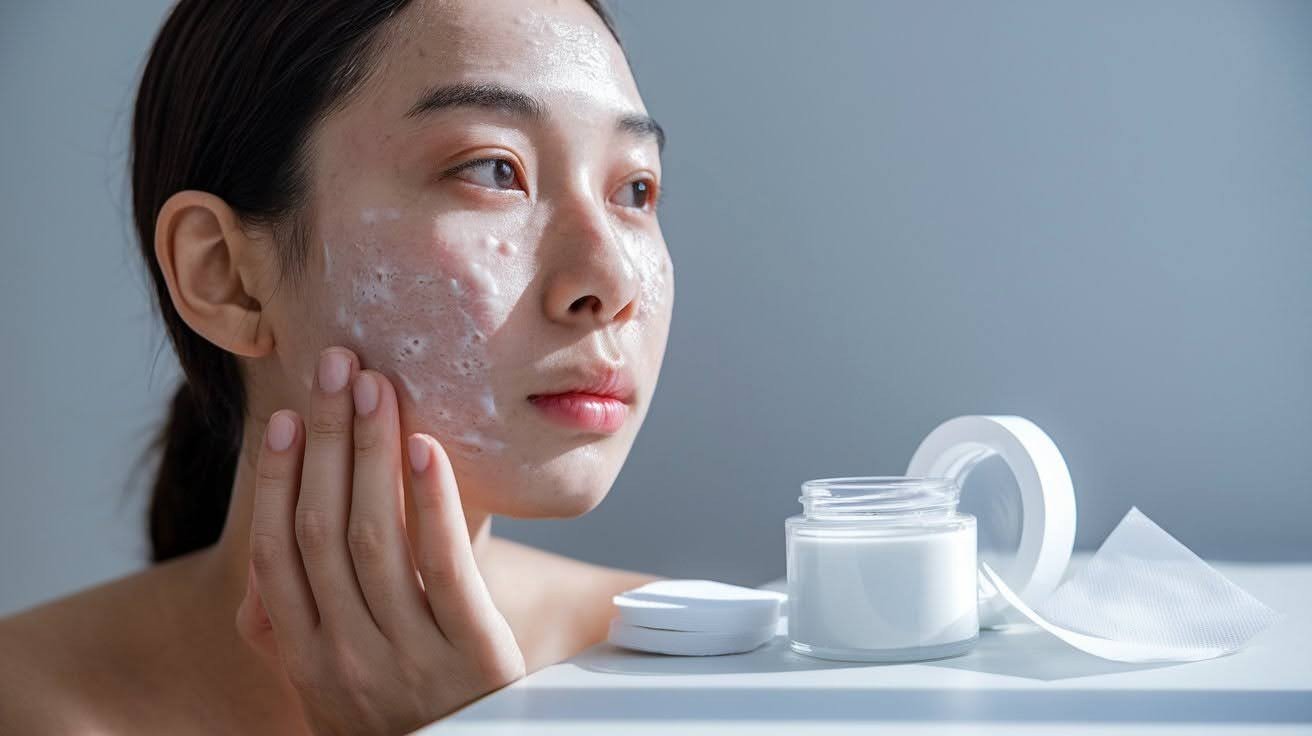
Watch for these warning signs that indicate you’re using too much moisturizer or the wrong type for your needs.
Clogged Pores and Tiny Bumps
Small, flesh-colored bumps appear across your forehead, chin, or cheeks. These closed comedones form when excess product blocks pore openings. The bumps don’t hurt but create texture you can feel.
Fix: Switch to a lighter gel formula and use only a pea-sized amount. Apply to damp skin for better absorption.
Extra Shine or Oily Texture
Your face looks greasy within hours of applying moisturizer. The shine is different from a healthy glow. It’s a slick, uncomfortable feeling that makes you want to blot constantly.
Fix: Reduce the amount you’re using and skip heavy occlusives. Choose oil-free, mattifying formulas instead.
Breakouts Around Nose and Chin
Pimples cluster around your nose, chin, and mouth area. These zones have more oil glands and react faster to heavy products. The breakouts appear as whiteheads or inflamed red bumps.
Fix: Use lightweight products and avoid applying thick layers in these areas. Consider spot-treating with less moisturizer on oily zones.
Redness or Sensitivity After Application
Your skin turns red or feels irritated after applying moisturizer. This signals that ingredients are causing inflammation. Burning or stinging sensations mean your barrier is compromised.
Fix: Stop using the product immediately. Return to a simple, fragrance-free formula with minimal ingredients. Let your skin calm down for several days.
How to Choose the Right Moisturizer for Acne-Prone Skin

Selecting moisturizer for acne-prone skin requires understanding beneficial ingredients and proper application techniques that prevent clogged pores.
Ingredients to Look For
Hyaluronic Acid: Draws moisture into your skin without adding oil. Holds 1000 times its weight in water and stays completely non-comedogenic.
Niacinamide: Reduces oil production and minimizes pore appearance. Fades dark spots left by old acne with minimal irritation.
Ceramides: Repair and strengthen your skin barrier. Prevent the dryness that triggers excess sebum production.
Salicylic Acid:Exfoliates inside pores and prevents clogs. Look for 0.5% to 2% concentration to treat and prevent breakouts.
Glycerin: Attracts moisture from the air. Gentle, affordable, and hydrates without greasiness or pore-clogging.
Probiotics: Support your skin’s healthy bacteria balance. Fight acne-causing bacteria naturally.
Best Practices for Application
Apply to Damp Skin: Apply immediately after cleansing while skin is slightly damp. Water helps ingredients penetrate instead of sitting on the surface.
Use Pea-Sized Amount: One pea-sized amount covers your entire face without overloading. More product doesn’t mean better results.
Moisturize Twice Daily: Morning application goes under sunscreen. Evening application helps skin repair overnight.
Avoid Heavy Layering: Don’t layer too many occlusive products. Too many heavy layers trap everything underneath.
Pat, Don’t Rub: Pat moisturizer gently into skin. Rubbing can irritate skin and spread bacteria.
Real People, Real Results
Hearing from others who solved their moisturizer-acne problems shows that finding the right formula and routine makes all the difference.
Sarah struggled with chin acne for two years using a thick cream. She switched to a gel moisturizer with niacinamide and hyaluronic acid. Her chin cleared within six weeks.
Marcus reduced his moisturizer from three pumps to one small pump, applying it only to dry areas. His breakouts stopped within days.
Jessica eliminated products with coconut oil and fragrance. She found a simple ceramide moisturizer and her cystic acne reduced by 80% in three months.
These experiences share common themes: lighter formulas, smaller amounts, ingredient awareness, and adjusted application.
Small changes created major improvements. The key is paying attention to your skin’s response and staying flexible with your routine.
When to See a Dermatologist
Professional help becomes necessary when home remedies and product changes don’t improve your acne after several weeks of trying.
See a dermatologist if breakouts persist despite changing moisturizers and adjusting your routine. Ongoing acne may require prescription treatments like retinoids or antibiotics.
Seek help when acne causes pain, deep cysts, or scarring. Over-the-counter products won’t adequately treat severe acne forms.
Consult a professional if you’re unsure which products suit your skin type or if skin reactions happen repeatedly with different products. You might have an underlying sensitivity that needs diagnosis.
Dermatologists create personalized plans based on your unique skin needs rather than generic advice.
Conclusion
Before finding the truth, I spent years attributing my breakouts to moisturizer. Does using moisturizer lead to acne? Only when you use too much or the incorrect formula.
Hydration is essential for the balance and health of your skin. Finding what suits your particular skin type and concerns is crucial.
Examine ingredient lists and make necessary adjustments to amounts. On the other side of these minor adjustments is your clear skin.
Tell us about your successes and failures with moisturizers!
Frequently Asked Questions
Can moisturizer cause acne on oily skin?
Yes, heavy moisturizers can cause acne on oily skin. Choose lightweight, oil-free gel formulas instead of thick creams. Look for non-comedogenic products that won’t clog pores.
Should I skip moisturizer if I have acne?
No, skipping moisturizer can make acne worse. Dry skin overproduces oil to compensate, leading to more breakouts. Use a light, non-comedogenic moisturizer suitable for acne-prone skin.
What ingredients in moisturizer cause acne?
Coconut oil, mineral oil, heavy silicones, artificial fragrances, and parabens commonly cause acne. Check labels and avoid these ingredients if you’re prone to breakouts.
How much moisturizer should I use to avoid breakouts?
Use only a pea-sized amount for your entire face. Apply to damp skin for better absorption. Too much product sits on your skin surface and clogs pores.
How long does it take to see if a moisturizer causes acne?
Breakouts from moisturizer typically appear within 1 to 3 weeks of regular use. Give new products at least two weeks to assess compatibility with your skin.


